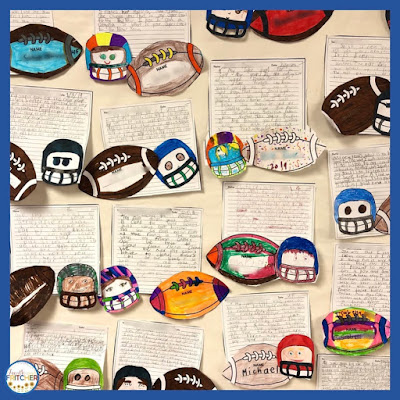Once you come back from the holidays there are many new mindsets that are in place. Everyone is on the resolution bandwagon and are trying to do their best. With all of those new goals, why not make your classroom reflect some of your new inspirations?
New Seating Arrangements
If you have assigned seats this is a great time to have the students come back to new places to sit. This will help break old behavior habits that were evident before the holidays. Unless there are behaviors, my students choose their own seats each day and oftentimes do not sit in the same places. But giving your classroom direction and structure with seating can provide security for those students who struggle with choosing a seat each day.
Partner Choice
A fun activity that can be done is choosing time or season partners. I provide the students with a graphic organizer that allows them to choose 4 different working partners that are their “go to” partners. It will require a bit of pre-planning, but helps speed up the process of pairing students up later on. If you are using a clock organizer, students will choose a partnership for the 12:00, 3:00, 6:00, and 9:00 spots. The season organizer runs the same way. These organizers can be stored in their folders or mailboxes for easy reference. This gives a fun way to get different kids working together and it's a novel way to organize them. You can always pick sticks for random groupings, but partner charts makes them feel like they have a choice in the decision making.
Flexible Seating Options
It seems like most of the beginning of the year the students are getting used to the classroom norms and expectations of the different seats available. This year, I had a group that had a hard time controlling themselves on the yoga ball seats, so I have limited the number available to the students this year. As one of our classroom goals is to have more self control, I am going to bring out some other floor seats and mats to incorporate more options for them to sit on. This will make coming back to school a little more inviting!
Rearrange Furniture
Making new areas in your classroom. Provide new nooks for reading, learning, group work, etc. I love making the room look just a little different so the kids feel like it's a new learning environment. I make subtle changes so it doesn’t take them too long to get used to the new space.
Goal Bulletin Boards
Providing a new bulletin board for them to engage with helps them get into the mind frame of new learning. Usually we will do the reflection and goal setting for the new year in a creative flip book or combine our goals with a writing task.
Each year I have my students complete a New Year's Resolution flapbook. It gives the students an opportunity to reflect on goals for the year. I walk them through each flap and encourage them to set realistic goals. Students glue their flapbook on a colored piece of paper and write their goals on the paper underneath.
Once the flapbooks are complete, I hang them in the hallway!
These flapbooks are available for FREE in
my TPT Store. Click the link below to get yours!
For a longer, more deliberate goal-setting activity, I love this one from Shelly Rees on TpT: New Years Resolution Bulletin Board and Goals Writing Activity. It's a great way to combine goals, writing, and the "Big Game"! It also works well because it can be done throughout the month as time allows and still be applicable into the next month because the Big Game is usually played the first weekend of February. Score!
 |
| Our Completed Bulletin Board |
 |
| Students have an opportunity to engage their creative sides while working on their fine motor skills. |
New Behavior Incentives
It seems like spring is full of state testing and benchmarks. Our schedules aren’t as consistent as we all need them to be either. I try to incorporate more choice into our days so the kids can feel like they do have some control over the craziness. I love to introduce choice balloons into the daily motivators. I create a Google form to inventory which things they would like to earn. They give me ideas that will help me differentiate my teaching as well as fun rewards they would like. I put a sticky note in each balloon before I blow it up. I post 3 balloons up in the front of the classroom. This provides them with a visual of what they are working towards. In the past I have created a rubric for their behavior and they earn points each day on factors such as: focus, noise level, work ethic. At the end of the day, or block, we orally go over the simple rubric. The students help me decide if they are worthy of their points (this helps them self evaluate themselves). If they get their points for the day they are one step closer to popping a balloon at the end of the day or week. Once the balloons are all popped, I put 3 new ones up to continue the motivation.
Making things fun and novel for the kids will help get you back into the swing of things as well. No one is super excited about coming back after a cozy vacation, but giving everyone new things to experience will help everyone start the last half of the school year with a little more zest and excitement.
Happy New Year!